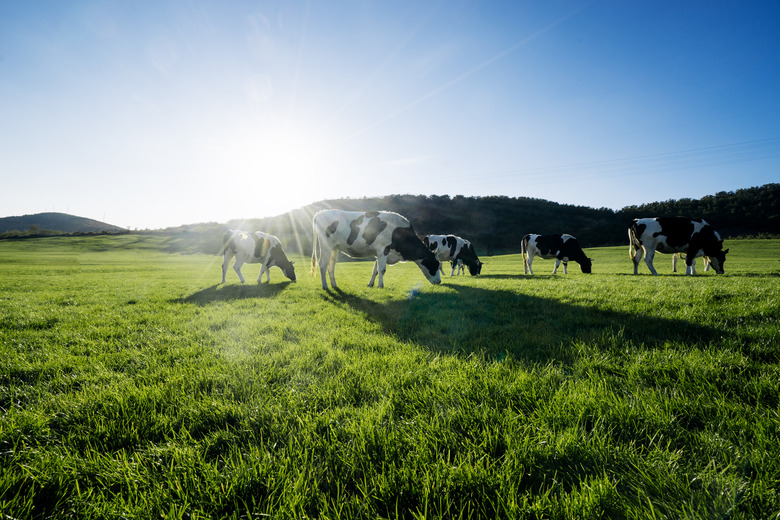What Are The Positives Of GMO?
The controversy surrounding genetically modified organisms is very heated and often political. If one were to believe all the naysayers, GMOs will leave all but the richest few humans dying of starvation in a matter of a decade. As any savvy consumer knows, however, there are two sides to every story. There are plenty of good reasons for the investment of time and money into GMOs.
What is Genetic Modification?
What is Genetic Modification?
Genetic modification is the science of replacing or adding genes from one organism to another to produce a beneficial result. Unlike selective breeding, which uses organisms that are very similar, genetic modification can use rather disparate plants and animals to get results. One example involves scientists who inserted daffodil and bacterial DNA into rice to give it a higher beta-carotene content. Daffodils and bacteria could never be cross-pollinated with rice using traditional breeding methods.
Benefits to Producers
Benefits to Producers
GMOs can have many benefits for food producers. Plants can be designed to be insect-resistant, heartier or to grow under more extreme conditions. Animals can be modified to give more meat or milk, or to grow faster. This results in higher yields for farmers and better products. One example is slow-ripening tomatoes, which can be stored longer, hold up better to transportation and still provide superior taste and texture for consumers and manufacturers.
Benefits to Humans
Benefits to Humans
In places where food is scarce or difficult to grow, plants and animals can be modified to provide more nutrients and grow better under harsh conditions. Scientists have added vitamins and minerals to staples like rice and corn to fight malnourishment in underdeveloped countries. Plants are more drought-resistant and easier to grow. Many plants are designed to use less pesticides and chemicals to grow, which means less exposure to these potentially toxic substances for farmers and consumers.
Benefits to the Environment
Benefits to the Environment
Many GMOs are tailored for specific environmental conditions, which means saving water in drought-prone areas and less use of chemicals. Higher yields and more efficient growth mean that the same amount of food is produced on less land, using fewer natural resources. Plants and animals become resistant to certain environmentally specific pathogens and insects, which reduces the chance of losing a crop to disease.
Cite This Article
MLA
Moore, Nola. "What Are The Positives Of GMO?" sciencing.com, https://www.sciencing.com/what-are-the-positives-of-gmo-13656838/. 22 November 2019.
APA
Moore, Nola. (2019, November 22). What Are The Positives Of GMO?. sciencing.com. Retrieved from https://www.sciencing.com/what-are-the-positives-of-gmo-13656838/
Chicago
Moore, Nola. What Are The Positives Of GMO? last modified August 30, 2022. https://www.sciencing.com/what-are-the-positives-of-gmo-13656838/
